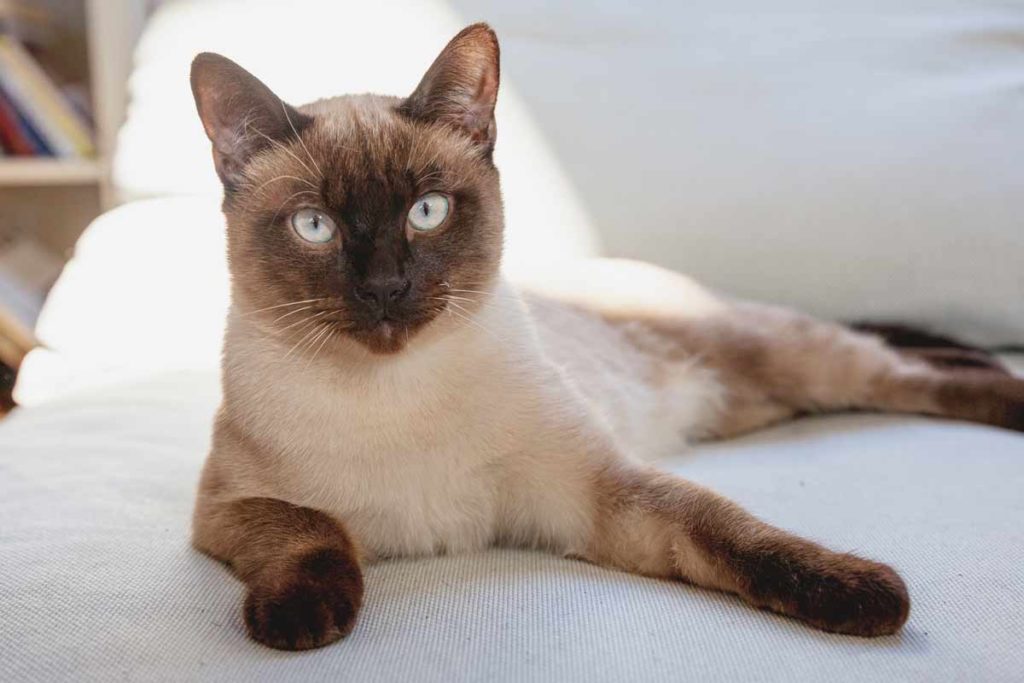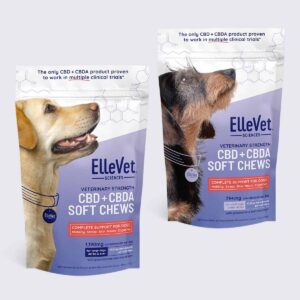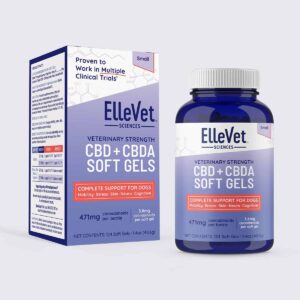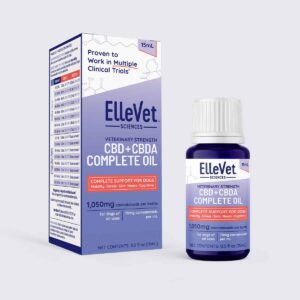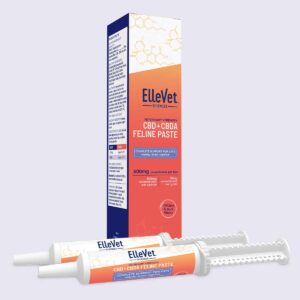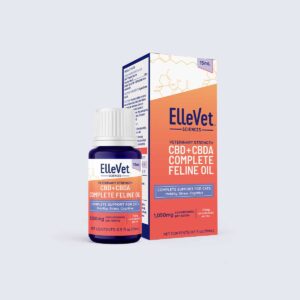Reviewed by: Dr. Robert Menardi, DVM
Just like our feline friends can have allergies, humans can be allergic to cats, too. If you or someone in your family suffers from an allergy to cats, you know that symptoms can be extremely unpleasant. Allergic reactions to felines are common. One study estimates that five to 20 percent of the world population suffers from cat-related allergies.
Table of contents
- How Do You Know If You Are Allergic to Cats?
- Do Hypoallergenic Cats Exist?
- What Are Allergy-Friendly Cat Breeds?
- What Cats Should You Avoid If You Have Allergies?
- Wrapping Up
So, if you or someone you know falls into this category, is it possible to be around cats or even welcome a cat into your home? Does a hypoallergenic cat breed exist? This guide will help you understand which cat breeds are best for allergy sufferers.
How Do You Know If You Are Allergic to Cats?
If your nose runs and your eyes water, or you start sneezing and wheezing after petting or playing with a cat, you likely have a cat allergy. Cats produce multiple allergens found on their fur and skin and in their saliva.
The majority of people with cat allergies are actually allergic to the protein Fel d 1, which is contained in cat saliva. When a cat licks their fur, and that saliva dries and becomes airborne, you breathe it in and experience a reaction.
Cat allergies can manifest through various symptoms, which may occur shortly after exposure to cats or develop over time. The most common symptoms of cat allergies include:
- Sneezing: Allergic reactions to cats often result in frequent sneezing, particularly when in close proximity to the cat or in environments where cat allergens are present.
- Watery and Itchy Eyes: Red, watery, and itchy eyes are common allergic symptoms resulting from the release of histamines in response to cat allergens.
- Runny or Stuffy Nose: An allergic reaction may cause a runny or congested nose, often accompanied by frequent sniffing or a feeling of nasal irritation.
- Nasal Congestion and Sinus Pressure: Some individuals may experience a blocked or congested feeling in the nasal passages, leading to sinus pressure or headaches.
- Coughing and Wheezing: Exposure to cat allergens can trigger coughing and wheezing in individuals with cat allergies, particularly those with underlying respiratory conditions like asthma.
- Skin Reactions: Allergies to cats can also cause skin-related symptoms, including redness, itchiness, hives, or a rash when in direct contact with cat fur or dander.
- Difficulty Breathing: In severe cases, cat allergies can lead to shortness of breath, chest tightness, or difficulty breathing. This is especially concerning for individuals with asthma or other respiratory conditions.
It is important to note that symptoms can vary in intensity depending on the individual’s level of sensitivity and the amount of exposure to allergens. If you suspect you have cat allergies or experience any of these symptoms, it is advisable to consult with an allergist for proper diagnosis and management strategies.
Do Hypoallergenic Cats Exist?
While there are a few cats that are known to be much less irritating for people with allergies, there is no such thing as a completely hypoallergenic cat.
All cats produce the Fel d 1 protein that contributes to allergic reactions in people. However, some cats produce and shed less of this protein than others.
Additionally, it is important to note that female cats tend to produce less Fel d 1 than males and neutered males less than intact males. So, when you hear a cat referred to as “hypoallergenic,” they are only “allergy-friendly” and may be slightly less unpleasant for allergy sufferers to be around.
What Are Allergy-Friendly Cat Breeds?
Here are some cat breeds that are low-allergen and low-shedding that could be a great fit for people with allergies.
Balinese
Often referred to as the “longhaired Siamese,” the Balinese looks like an unlikely candidate for a hypoallergenic cat breed, considering their full coat. However, this breed produces less of the Fel d 1 protein than other cats, causing fewer allergic reactions in allergy sufferers.
The coat on the Balinese is silky in texture and single-coated. Despite their long coats, these cats are not frequent shedders and require minimal grooming maintenance.
This is good news for those with cat allergies, as Balinese cats are known to be very affectionate and social. That said, you can expect to spend a lot of time up close and cozy with your Balinese.
Oriental Shorthair
Similar to the Balinese, Oriental Shorthairs are also members of the Siamese family of cats. These cats are long, slender, and have silky coats that are easy to care for and don’t shed too much.
Oriental Shorthairs are considered a hypoallergenic cat breed who only requires minimal grooming. Because they are highly social and affectionate, they will love weekly brushings as an opportunity to spend time with you and be the center of attention.
Javanese
Like the Balinese, the Javanese sports a medium-long single coat that doesn’t shed frequently. Originating from a cross between a Balinese and a Colorpoint Shorthair, these cats don’t have an undercoat, meaning they don’t shed much and only need a weekly brushing. Thus, they spread fewer allergens, which might work for people with mild cat allergies.
Javanese are affectionate and vocal and will tell you when they want attention. They love to spend time cuddling with their people and often follow their owners around the house.
Devon Rex
Of the two Rex cats, the Devon has both shorter fur and less fur. Although they have three coat layers, their hair is fine, short, and wavy with little flyaway hair. With this, the Devon Rex sheds less than many other cat breeds.
You can wipe down the coat of this cat to spread the natural oils and keep it clean, but generally, the Devon Rex won’t require much grooming care.
They are curious, outgoing, and love to be involved in whatever you’re doing. The Devon Rex is usually eager to snuggle, so their allergy-friendly coat is good news for allergic owners.
Cornish Rex
Cornish Rexes have curly coats that sit close to their bodies. Their short, thin coats are wavy and low-shedding. They do require more upkeep than the Devon because these cats need frequent baths to mitigate the oil buildup on their skin.
The Cornish Rex is active and outgoing with a playful temperament. They are typically very affectionate lap cats who love to be the center of attention and will follow you around from room to room.
Sphynx
The hairless Sphynx is the cat most often associated with being an allergy-friendly cat breed. Being hairless, like the Bambino, does not mean they’re maintenance-free, however. Like all cats, the Sphynx produces dander. They need frequent baths to remove oil buildup on their skin, which can also help with limiting allergens.
Sphynx cats are friendly, outgoing, and playfully mischievous. This breed is also intelligent, curious, and loves attention. These cats will be willing to follow you around, showing dog-like loyalty and devotion.
Siberian
Like the Balinese, the Siberian cat has a thick, moderately long coat but is still considered allergy-friendly due to the lower-than-average Fel d 1 protein levels in their saliva. They do shed seasonally, during which time daily brushing will help keep their coats healthy, especially the undercoat, as well as minimize allergens.
Siberians are affectionate cats with lots of personality and playfulness. They are open to handling and have a fascination with water, often dropping toys into their water dishes or splashing in bathtubs.
Russian Blue
Recognizable by the color of their coats, Russian Blues have a short but dense coat. This hypoallergenic cat breed doesn’t shed much, so there’s less dander floating around, and they produce relatively less Fel d 1 than other breeds.
Russian Blues are gentle, affectionate, and happy to spend quiet time alone and with their families. Grooming is usually easy because these quiet and gentle cats often love sitting with their favorite humans to be brushed.
Colorpoint Shorthair
As a first cousin of the Siamese, the Colorpoint Shorthair is considered a low-allergen cat breed. Their low-maintenance coat doesn’t shed much.
They generally love to be around their favorite humans as much as possible and are very curious. What they lack in grooming needs, they make up for in play and activity, so be prepared to give them exercise and plenty of toys (and all the pets — they love affection!).
What Cats Should You Avoid If You Have Allergies?
If you are allergic to cats, it is generally recommended to avoid or minimize contact with the following types of cats:
- Long-Haired Cats: Cats with long fur tend to shed more dander, which is a common allergen. Breeds such as Maine Coons, Ragdolls, and Himalayans are examples of long-haired cats that may produce more allergens and trigger allergic reactions.
- High Dander-Producing Breeds: Certain cat breeds are known to produce higher levels of allergenic proteins, such as the Fel d 1 protein found in cat saliva, urine, and dander. Breeds like Siamese, Abyssinians, and other long-haired cats can potentially cause more severe allergic reactions due to their higher allergen production.
- Outdoor Cats: Cats that spend significant time outdoors can carry allergens from their environment, such as pollen and outdoor allergens, on their fur. This can increase the risk of triggering allergies in sensitive individuals.
- Uncertain Origins or Mixed Breeds: Cats of unknown or mixed breed heritage may have a variety of allergenic traits, as their genetic background is often less predictable. It can be harder to gauge potential allergic reactions to these cats.
It’s important to note that individual sensitivities and allergies can vary. Some individuals may still react to cat breeds that are generally considered hypoallergenic, while others may tolerate certain cat breeds that are typically considered allergenic.
Consulting with an allergist and spending time with specific cat breeds before making a decision is the best approach to determine your personal tolerance and minimize the risk of allergic reactions.
Wrapping Up
At ElleVet, we believe that if you have mild cat allergies and want to be a cat owner, it’s still possible to adopt the right feline friend to join your family.
Some cats don’t give off as many allergens as others, and while no cat is completely hypoallergenic, allergy-friendly breeds make excellent companions for those allergy sufferers. Look for cats with low Fel d 1 protein levels, as these cats will be less likely to trigger serious allergic reactions.
Sources:
Human allergy to cats: A review of the impact on cat ownership and relinquishment | NIH
Understanding the Impact of Cat Allergens on the Human-Animal Bond | HABRI
An update on molecular cat allergens: Fel d 1 and what else? | Biomed Central

